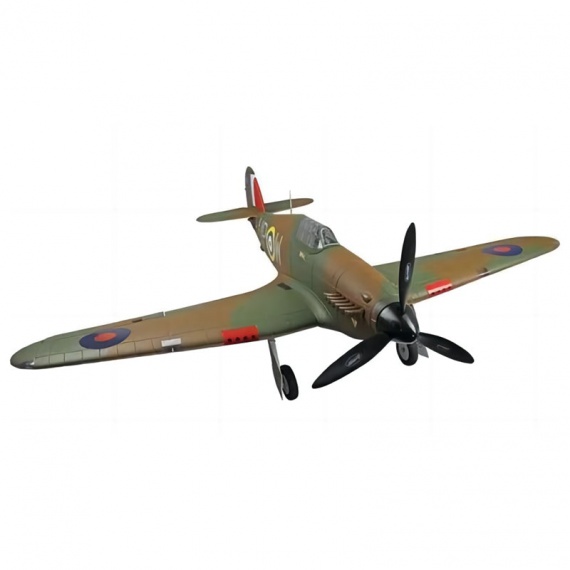Tipps für Start und Landung von RC-Flugzeugen: Ein Leitfaden für RC-Anfänger
RC-Flugzeuge zu starten und zu landen, kann eine Herausforderung sein, besonders für RC-Anfänger. In diesem Artikel teile ich meine Erfahrungen und gebe wertvolle Tipps, die dir helfen, deine Fähigkeiten zu verbessern. Außerdem stelle ich das Dynam Hawker Hurricane V2 vor, ein beeindruckendes RC-Flugzeug, das sowohl für Anfänger als auch für erfahrene Piloten geeignet ist.

Warum ist das Starten und Landen so wichtig?
Das Starten und Landen sind die kritischsten Phasen eines Fluges. Ein erfolgreicher Start sorgt für einen reibungslosen Flug, während eine sichere Landung das Flugzeug und seine Komponenten schützt. Für rc anfänger flugzeug ist es entscheidend, diese Fähigkeiten zu beherrschen, um Unfälle zu vermeiden und die Lebensdauer des Flugzeugs zu verlängern.
Tipps für den Start
Wähle den richtigen Ort: Ein offenes Feld ohne Hindernisse ist ideal. Vermeide Bereiche mit Bäumen, Gebäuden oder Stromleitungen.
Überprüfe das Flugzeug: Stelle sicher, dass alle Teile des Flugzeugs, wie Propeller, Motoren und Ruder, in einwandfreiem Zustand sind.
Windrichtung beachten: Starte immer gegen den Wind. Dies gibt dem Flugzeug mehr Auftrieb und erleichtert den Start.
Langsame Beschleunigung: Gib nicht sofort Vollgas. Beschleunige langsam, um das Flugzeug stabil zu halten.
Vorbereitung ist alles: Beginne frühzeitig mit der Landevorbereitung. Reduziere die Geschwindigkeit und verringere die Höhe schrittweise.
Landebahn auswählen: Wähle eine lange, ebene Fläche für die Landung. Vermeide unebenes Gelände.
Geschwindigkeit kontrollieren: Zu schnelles Landen kann zu Beschädigungen führen. Halte die Geschwindigkeit niedrig, aber nicht zu langsam, um einen Strömungsabriss zu vermeiden.
Sanfte Landung: Versuche, das Flugzeug sanft aufzusetzen. Ein harter Aufprall kann das Fahrwerk beschädigen.
Das Dynam Hawker Hurricane V2 ist ein hervorragendes RC-Flugzeug, das sowohl für RC-Anfänger als auch für erfahrene Piloten geeignet ist. Es kombiniert historisches Design mit moderner Technologie und bietet ein beeindruckendes Flugerlebnis.
Geschichte und Design
Die Hawker Hurricane war eines der wichtigsten Jagdflugzeuge der Royal Air Force während des Zweiten Weltkriegs. Das Dynam Hawker Hurricane V2 ist eine detailgetreue Nachbildung dieses legendären Flugzeugs. Mit einer Spannweite von 1,25 Metern und einem Gewicht von etwa 1,8 kg ist es ein perfektes Modell für RC-Enthusiasten.
Leistung und Merkmale
Motor: Der leistungsstarke Brushless-Motor sorgt für eine hervorragende Beschleunigung und Geschwindigkeit.
Klappen: Das Flugzeug ist mit Klappen ausgestattet, die eine präzise Kontrolle bei Start und Landung ermöglichen.
4S-LiPo-Akku: Der 4S-LiPo-Akku bietet eine lange Flugzeit und zuverlässige Leistung.
Stabilität: Dank der stabilen Bauweise und des gut ausbalancierten Schwerpunkts ist das Flugzeug auch für RC-Anfänger leicht zu kontrollieren.
Ich habe das Dynam Hawker Hurricane V2 4S RC Warbird 1,25 m mit Klappen selbst geflogen und war beeindruckt von seiner Leistung und Handhabung. Der Start war dank der Klappen und des starken Motors problemlos. Die Landung war ebenfalls einfach, da das Flugzeug sehr stabil und kontrollierbar ist. Für RC-Anfänger ist dieses Modell eine ausgezeichnete Wahl, da es sowohl einfach zu fliegen als auch robust genug ist, um kleine Fehler zu verzeihen.
FAQ: Häufig gestellte Fragen
1. Ist das Dynam Hawker Hurricane V2 für Anfänger geeignet?
Ja, das Flugzeug ist sowohl für Anfänger als auch für erfahrene Piloten geeignet. Seine Stabilität und einfache Handhabung machen es zu einer guten Wahl für RC-Anfänger.
2. Wie lange dauert der Aufbau des Flugzeugs?
Der Aufbau ist relativ einfach und dauert in der Regel etwa 1-2 Stunden.
3. Welche Akkus werden benötigt?
Das Flugzeug verwendet einen 4S-LiPo-Akku, der nicht im Lieferumfang enthalten ist. Es wird empfohlen, einen hochwertigen Akku mit einer Kapazität von mindestens 2200 mAh zu verwenden.
4. Kann das Flugzeug auch ohne Klappen geflogen werden?
Ja, das Flugzeug kann auch ohne Klappen geflogen werden, aber die Klappen erleichtern Start und Landung erheblich.
Zusammenfassung
Das Starten und Landen von RC-Flugzeugen erfordert Übung und Präzision. Mit den richtigen Tipps und einem zuverlässigen Flugzeug wie dem Dynam Hawker Hurricane V2 können auch RC-Anfänger schnell Fortschritte machen. Dieses Modell bietet eine perfekte Mischung aus historischem Design und moderner Technologie und ist eine ausgezeichnete Wahl für jeden, der in die Welt der RC-Flugzeuge einsteigen möchte.
Technische Daten des Dynam Hawker Hurricane V2
| Spezifikation | Details |
|---|---|
| Spannweite | 1,25 m |
| Gewicht | 1,8 kg |
| Motor | Brushless-Motor |
| Akku | 4S-LiPo (nicht im Lieferumfang) |
| Klappen | Ja |
| Empfohlenes Alter | Ab 14 Jahren |
| Schwierigkeitsgrad | Anfänger bis Fortgeschrittene |
Mit diesen Tipps und Informationen bist du bestens gerüstet, um deine RC-Flugkünste zu verbessern und das Dynam Hawker Hurricane V2 zu meistern. Viel Spaß beim Fliegen!

